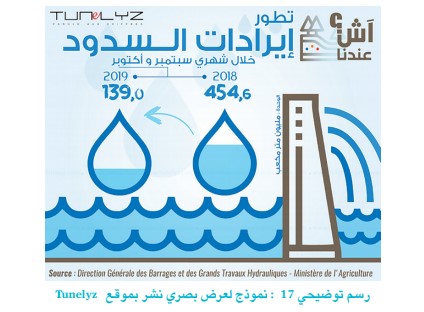
In the Middle East as elsewhere, journalists have had to learn how to process vast amounts of data and present it in an easily digestible format.
One of the most important legacies of the Arab Spring is that access to information has now been enshrined as a right in many of the countries affected by the wave of anti-government protests that spread across much of the Islamic world from 2011 onwards.
In a number of Maghreb and Middle East countries, the Arab Spring led to a new era of transparency in which citizens were allowed greater access to government data.
Tunisia, for example, became a member of the Open Government Partnership in 2014 and went on to adopt a Freedom of Information law in 2016.
New challenges
The political and social changes in the Arab world coincided with a huge expansion of online sources of information and technical means of accessing the resulting mass of data. This posed a huge challenge for journalists everywhere, and meant they had to devise new ways to process all this information and present it in a form that didn’t threaten to overwhelm the audience.
Arab investigative journalists soon began to experiment with data journalism to help them explain things to the public, and before very long the first startups specializing in this approach appeared: Egypt’s InfoTimes was launched in 2012, followed by Tunisia’s Inkyfada in 2014 and Lebanon’s Bayanat Box in 2017. The Arab Data Journalists’ Network was officially launched at a conference in Cairo in 2018.
These projects were in general spearheaded by younger journalists from a range of disciplines, often with training in economics and data science as well as in journalism.
NGOs take the lead
At that time, many aspiring data journalists got their first chance to develop their skills in this field at a hackathon organised by NGOs such as Tunisia’s non-profit E-Governance Society. In 2017, this put on a “Data Journalism Hackathon” in Tunis that was sponsored by the Friedrich Naumann Foundation (FNF).

An infographic created by the Tunisian data journalism project Tunelyz
While civil society took the lead by promoting data journalism events such as hackathons, university journalism schools have been slow to catch up. Many journalism schools lack the resources and staff with the skills required to teach data journalism.
Interviews conducted with data journalism project managers in the Maghreb and the Middle East and of university professors of journalism in a number of countries (Egypt, Tunisia, Lebanon, Saudi Arabia, Morocco, Algeria and the United Arab Emirates) show that the main challenges identified are:
- Underdeveloped university infrastructure
- Lack of adequate software and online applications, and
- Lack of properly qualified teaching staff
My recently released Data Journalism Handbook (published with the support of the Tunisian E-Governance Society and the Friedrich Naumann Foundation) is aimed at both students studying journalism at universities and professional journalists for whom the subject did not form part of their training.
It seeks to make available in Arabic an abundance of information and advice on the practical steps that data journalists everywhere need to follow:
- How to collect the data
- How to verify the data
- How to select the data
- How to visualize the data
- How to write and share a piece of journalism based on data
However, it is also aimed specifically at journalists in the Arab world and makes particular reference to the Tunisian context. For instance, it draws on the experience of figures such as the founder of a Tunisian data journalism project Tunelyz, an expert on Big Data, the head of Tunisia’s e-government service, a member of the body set up by the government to combat corruption, etc.
A practical guide
Designed to be a practical guide, the handbook gives step-by-step examples of how to carry out specific data journalism tasks and sets a series of exercises so that the reader can put their newly-acquired knowledge to the test.
As well as providing the reader with a comprehensive list of useful online resources, the book also looks at the creation of infographics and advises budding data journalists on how to decide which kinds of graphic illustration are best suited to convey the information they want to share with the public.
Nouha Belaid’s Data Journalism Handbook (in Arabic only) can be accessed via the website of Tunisia’s E-Governance Society.
Main image from piqsels / Creative Commons license: CC0 1.0 public domain
Opinions expressed on this website are those of the authors alone and do not necessarily reflect or represent the views, policies or positions of the EJO.
If you liked this story, you may also be interested in How Data Journalism Is Taught In Europe
Sign up for the EJO’s regular monthly newsletter or follow us on Facebook and Twitter.
Tags: Arab Data Journalists' Network, Arab Spring, Bayanat Box, Data Journalism, Friedrich Naumann Foundation, hackathons, InfoTimes, Inkyfada, MENA, Tunelyz













































